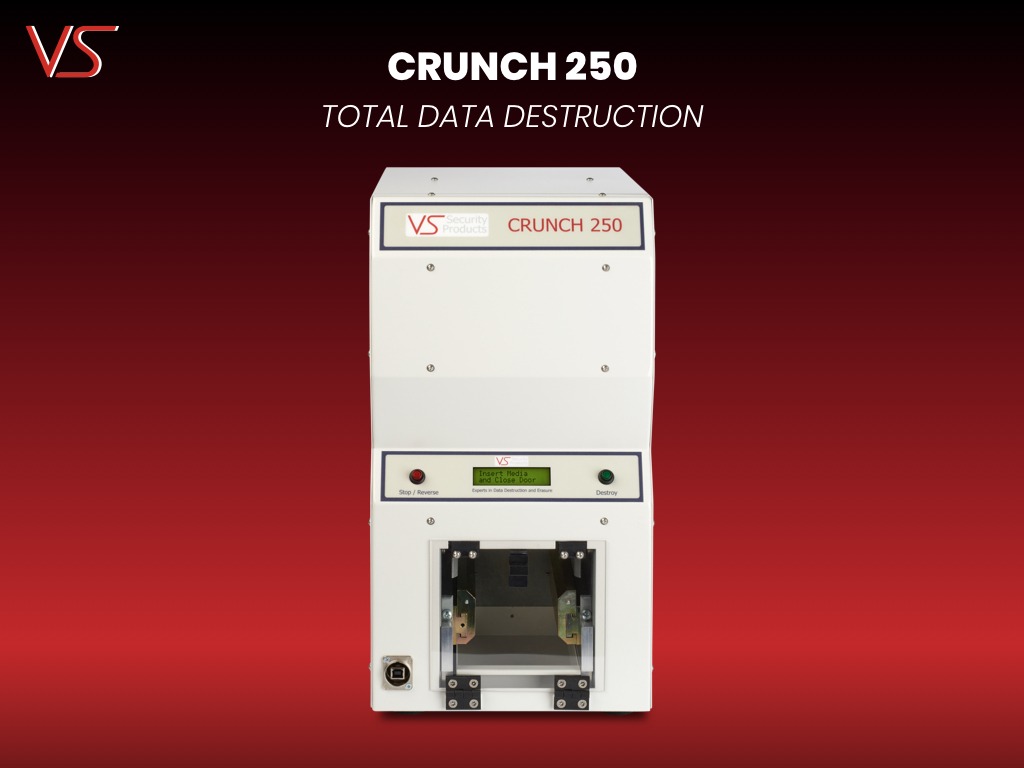Protecting Civilian Data in County Departments With On-Site Secure Data Erasure

County departments across the United States are entrusted with vast amounts of sensitive civilian data. From health records to employment information and infrastructure details, county offices manage a significant amount of information that is critical to the well-being of their residents. This data includes personal and confidential details of civilians, government employees, contractors, and officials — making it a prime target for cybercriminals and identity thieves.
As the digital era progresses, so too does the need for county departments to adopt stringent measures for protecting this data from unauthorized access. While cybersecurity measures such as firewalls and encryption are critical to keeping data safe while in use, it is equally essential to ensure the secure disposal of data that has reached the end of its lifecycle. For this, on-site secure data destruction is a reliable and efficient solution that helps mitigate the risks of data breaches and theft.
The Data Lifecycle: When Hard Drives Reach Their End-of-Life
Hard drives, like all forms of digital storage, have a finite lifespan. Over time, these drives wear down and become outdated, necessitating their replacement. However, simply replacing a hard drive is not sufficient to ensure the data it once stored is gone for good. Even if data is “deleted” through traditional methods, residual data — often called data remnants — can remain on the drive. These remnants can be recovered by malicious actors if the drive falls into the wrong hands, even if the drive has been formatted or repurposed for recycling.
To safeguard the integrity of this data, it is crucial that hard drives are fully and securely destroyed at the end of their lifecycle. This prevents unauthorized individuals from accessing sensitive information long after the drives are no longer in use. On-site data destruction allows county departments to maintain full control over the disposal process and ensure that no data is left vulnerable.
The Role of Government Employees in Data Protection
Government employees play a critical role in the protection and disposal of data in county offices. Since they handle sensitive information daily, they must be trained to understand the importance of secure data handling and destruction. This training should include recognizing when hard drives and other storage media reach the end of their useful life and implementing the correct procedures for secure disposal.
Establishing clear policies on data disposal can help county departments ensure that every staff member is aware of their role in protecting sensitive information. These policies should specify that obsolete hard drives should never be left unsecured or sent off for recycling without first undergoing thorough data destruction processes.
Secure On-Site Data Destruction Methods
Two of the most effective methods for securely destroying data on hard drives are degaussing and shredding. These methods are suitable for different types of storage devices and ensure that no recoverable data is left behind after destruction.
– Degaussing for Traditional HDDs: Degaussing uses powerful magnetic fields to disrupt the magnetic domains on a traditional mechanical hard drive, rendering the data unreadable. This method is particularly effective for older HDDs (Hard Disk Drives) that store data magnetically. One of the most reliable tools for degaussing is the NSA-listed SDD Master. It is specifically designed for government use, providing a high level of security and ensuring that no data can be recovered from degaussed drives. The SDD Master is compliant with government security standards, making it a go-to option for county departments.
– Shredding for SSDs: Unlike HDDs, SSDs (Solid State Drives) store data electronically and are not affected by degaussing. For SSDs, shredding is the most secure method of data destruction. The MediaGone 500 is an industry-leading shredder capable of reducing drives into tiny, unreadable fragments. Shredding an SSD physically destroys the device, ensuring that no residual data can be recovered. This method is effective for any type of solid-state storage, making it versatile for the varied storage needs of county departments.
Why County Departments Must Prioritize Secure Data Destruction
County departments are repositories of highly sensitive information, ranging from civilian health and employment data to infrastructure and government employee records. The sheer volume and sensitivity of this data mean that secure disposal is not optional — it is a necessity. Failure to properly destroy hard drives at their end-of-life stage can lead to severe consequences, including data breaches, identity theft, and loss of public trust.
For example, county departments often store health records that are protected under HIPAA (Health Insurance Portability and Accountability Act), employment records protected under various labor laws, and infrastructure plans that are vital to public safety. In each of these cases, a data breach could result in serious repercussions, including financial penalties, legal challenges, and reputational damage to the government body.
The Benefits of On-Site Data Destruction
On-site data destruction offers a number of advantages for county departments. By carrying out destruction processes on government premises, departments maintain complete control over sensitive data throughout its lifecycle. This eliminates the risks associated with transporting storage devices to third-party facilities for destruction. It also ensures compliance with relevant regulations regarding data disposal, particularly those related to data privacy and protection in the public sector.
Additionally, on-site destruction allows county departments to verify that data has been completely destroyed before the storage devices are recycled or discarded. Using degaussing and shredding equipment such as the SDD Master and MediaGone 500 enables county offices to confidently handle both traditional HDDs and modern SSDs, ensuring that all forms of data storage are securely dealt with.
Securing Civilian Data for a Safer Future
As operators of data, county departments must prioritize secure data disposal to protect their residents from data theft and exposure. By adopting on-site data destruction methods such as degaussing and shredding, and ensuring that employees are trained in data protection best practices, counties can safeguard the personal and sensitive information entrusted to them.
To learn more about safe data destruction and to find suitable solutions for your government department, get in contact with us today: [email protected]
Photo credit: Darren Irvin


